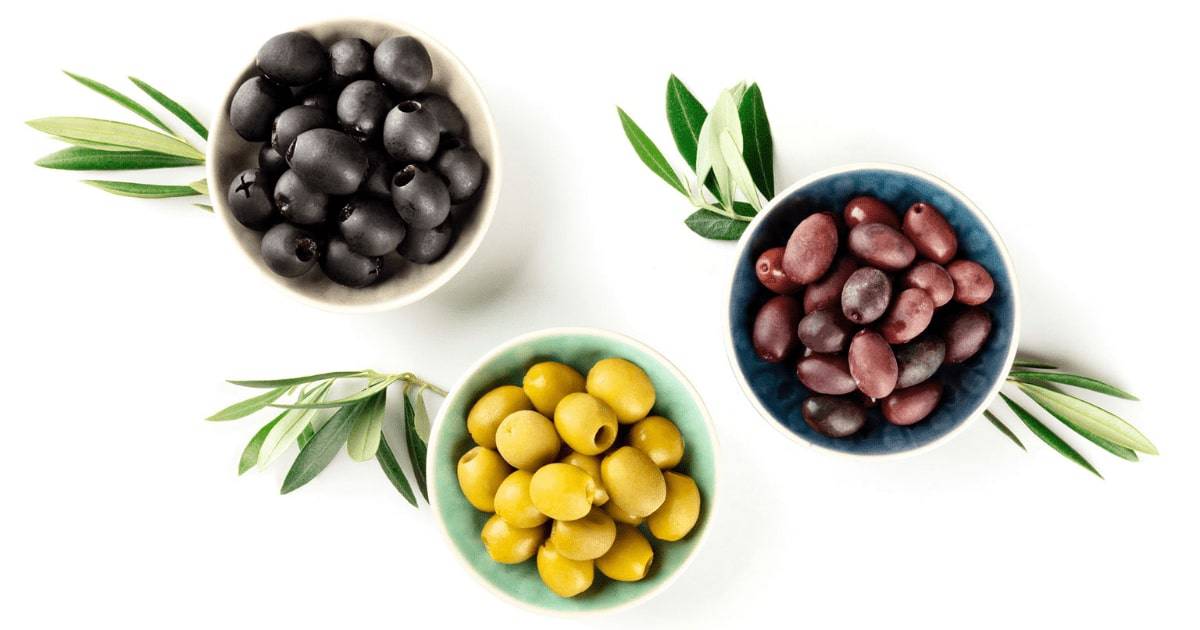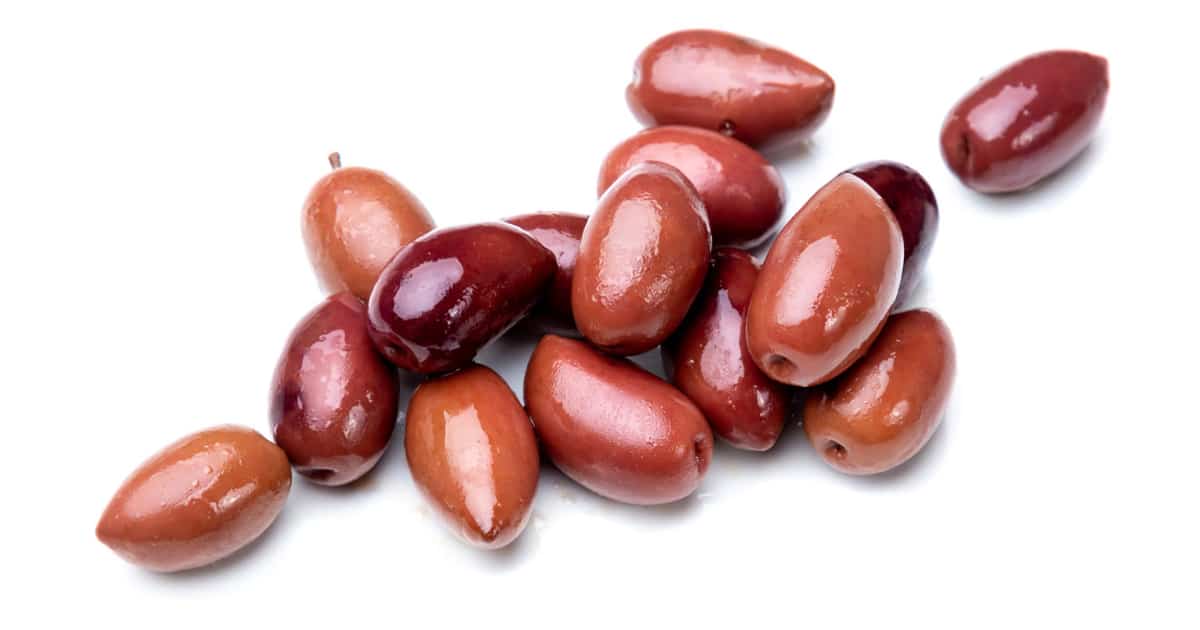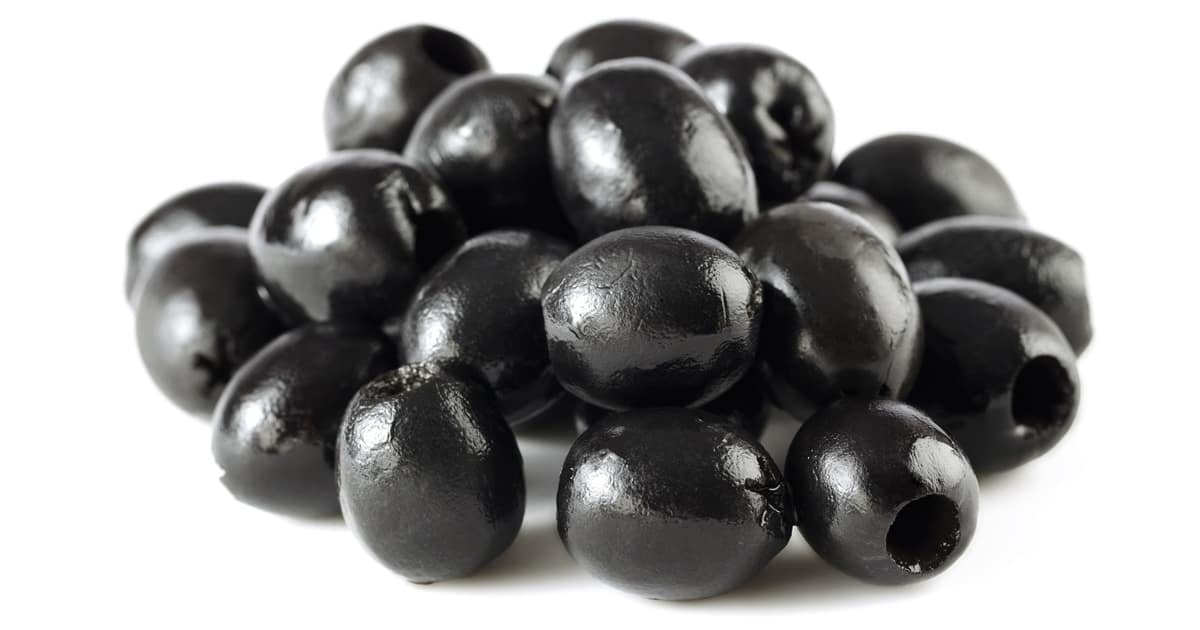Did you know that olives have been used and cultivated since ancient times?
People have been growing olive trees for more than 6,000 years. The tree is called Olea Europaea and comes from the Mediterranean area.
People worldwide use olives for many things, like food, oil, and medicine.

Olives also have a special meaning for many people. They stand for peace, wisdom, and prosperity.
In ancient Greece, people who won at sports events got olive wreaths. Today, people still use the olive branch to show peace.
The Importance of Olives in Mediterranean Cuisine
If you love Mediterranean food, you probably enjoy olives. They are tasty fruits that can be eaten whole or chopped, adding flavor to salads, pizzas, pasta, and more. Olives also give us a healthy and delicious cooking oil.
There are many kinds of olives, but we will compare two common ones: Kalamata and black olives.
We will tell you where they come from, what they look like, how good they are for you, how they taste and feel, how they are made, how to use them in your dishes, how to keep them fresh, and where to buy them.
We will also give you some tips on how to make olives at home.
By the end, you will know how to pick the best olive for your taste buds.
What Are Kalamata Olives?

A city in southern Greece called Kalamata gives its name to these olives. They grow only in the Peloponnese peninsula, where the soil and weather make them unique. People pick them up by hand so they don't get damaged.
You can tell they are Kalamata olives by their large shape that looks like an almond. They are hard and juicy, with a sweet and sour taste that has a bit of bitterness. They soak them in red wine vinegar and salt to make them more delicious.
They are suitable because they have healthy fats that can lower bad cholesterol and protect your heart.
They also have fiber, vitamin E, and antioxidants that fight inflammation and keep your heart healthy.
What Are Black Olives?

Black olives, ripe olives, or California olives have matured fully on the tree and acquired a dark color ranging from purple to black.
They have smooth, glossy skin and a round, small shape. They have a soft, tender texture and a slightly sweet taste.
The most common kind of black olive available in supermarkets is the canned one, which has undergone a lye treatment to reduce bitterness and is then preserved in a salt solution.
They share some nutritional benefits with Kalamata olives, such as providing monounsaturated fats, fiber, vitamin E, and antioxidants.
However, they have a lower nutrient content overall due to the lye treatment and canning process.
Taste and Texture Comparison
Kalamata olives
Do you like bold flavors? Kalamata olives have a fruity, tangy, slightly bitter taste that stands out. They are also firm and meaty.
You don't need many of them to make a dish delicious.
They are great as a main ingredient or to add a special touch.
Black olives
Do you prefer mild flavors? Black olives have a sweet and salty taste that is not too strong. They are also soft and tender, blending well with other ingredients.
You can use them in many dishes without worrying about overpowering other flavors. They are great as a versatile ingredient or a unique topping.
Olive Processing Methods
Kalamata olives: natural fermentation
Kalamata olives are first soaked in salt water for a long time. This gives them their unique flavor and texture. It also keeps them fresh for longer.
After that, they go into a red wine vinegar brine. This makes them taste even better.
Black olives: lye treatment
Black olives go through a lye treatment instead.
Lye is a chemical that removes the bitter taste from raw olives. They often rinse the olives with water to remove the lye afterward.
Then they put them in saltwater too. Sometimes they add a substance called ferrous gluconate. This helps them stay black.
Culinary Uses and Pairings
Kalamata olives
1. Appetizers
If you want a snack with a strong flavor and a firm texture, try kalamata olives.
They are perfect for appetizers, either by themselves or with other foods.
You can serve them with cheese, crackers, and cured meats. You can also make tapenade, a tasty olive spread with capers, garlic, and olive oil.
2. Salads
They make salads more delicious. Their satisfying flavor and texture go well with fresh greens, tomatoes, cucumbers, and feta cheese.
These are the main ingredients of a classic Greek salad.
3. Main courses
You can also use them in many main dishes, such as pasta, pizza, and stew.
They add richness and complexity to tomato-based sauces and work well with garlic, onions, and fresh herbs.
You can also top grilled meats and fish with them or mix them with grains like couscous or rice.
Black olives
1. Appetizers
How about some black olives to start your meal? They are mild and versatile, so everyone can enjoy them.
You can have them plain or stuff them with cheese, garlic, or pimentos.
You can also mix them with dips like hummus or guacamole.
Or you can put them on a cheese and charcuterie board for extra flavor.
2. Salads
They are also great for salads. You can toss them with greens, pasta, or potatoes.
They add a nice color and contrast to your salad and go well with many ingredients.
They have a mild, slightly sweet flavor that you will love.
3. Main courses
You can also use them for your main course. They are perfect for pasta, pizza, casseroles, and more.
They blend well with other flavors and don't overpower the dish.
You can also sprinkle them on grilled meats and fish or put them in sandwiches and wraps.
Preservation and Storage
Kalamata olives
You can keep the olives fresh and tasty by storing them in the brine they came in. This helps them keep their flavor and texture.
You can also put them in a sealed container in the fridge for several months.
Freezing them in a sealed container or plastic bag is also an option, but this might change their texture slightly.
Black olives
Store unopened cans of black olives in a cool, dry place.
After opening, put any leftover olives in a sealed container and keep them in the fridge for up to two weeks.
You can freeze them too, but they might become softer.
Popular Olive Brands and Producers
Kalamata olives
| Rank | Preview | Product | |
|---|---|---|---|
| 1 |  | 365 by Whole Foods Market, Organic Pitted Kalamata Olives, 4.6 Ounce | Check Current Price |
| 2 |  | Roland Foods Whole Pitted Kalamata Olives from Greece, Specialty Imported Food, 4.4 Lbs | Check Current Price |
| 3 |  | Mario Camacho Foods Pitted Kalamata Mediterranean Olives, 6.50 Ounce | Check Current Price |
Do you love Kalamata olives? Then you might want to try Divina, Gaea, Krinos, or Iliada.
These are some of the top brand names. They get their olives straight from Peloponnese in Greece. That's why they taste so good and natural.
Black olives
| Rank | Preview | Product | |
|---|---|---|---|
| 1 |  | Early California, Ripe Pitted, Large Black Olives, 6 oz, 6-Cans | Check Current Price |
| 2 |  | Amazon Brand - Happy Belly Large Pitted Ripe Olives, 6 Oz | Check Current Price |
| 3 |  | Pearls Sliced Ripe Olives 6 Cans 6.5oz, 39 Fl Ounce | Check Current Price |
How about black olives? You have many choices too. Lindsay, Pearls, Mezzetta, and Mario Camacho are some of the best brands.
They offer different kinds of black olives. You can get them pitted, sliced, or stuffed. Whatever you like, they have it for you.
DIY Olive Processing and Curing
Kalamata olives
You can process and cure fresh Kalamata olives at home.
Here's how:
- Cut each olive slightly to let the brine go in.
- Next, put the olives in saltwater for a few weeks or months.
- Change the water every week to make them less bitter.
- Move them to a new saltwater with red wine vinegar mixture. Please keep them in the fridge.
Black olives
You can also process and cure black olives at home. The method is similar but with some changes.
Here's how:
- Cut each olive slightly and soak them in lye for 12-24 hours.
- Rinse them well with water to remove the lye and bitterness.
- Put them in saltwater for a few weeks.
- Change the water every week until they taste and feel good.
- Move them to a fresh batch of salt water and keep them in the fridge.
Conclusion
Both olives have different flavors, textures, and health benefits. You can use them to make many dishes better.
Kalamata olives taste strong and tangy. They are also firm and crunchy. If you like rich and complex flavors, you will love them.
Black olives are mild and smooth. They are also softer and easier to eat. You can add more of them to your recipes without changing the taste too much.
Which olive you choose depends on what you like and what you are cooking.
Knowing how these two varieties of olives differ lets you pick the best one for your dish.

